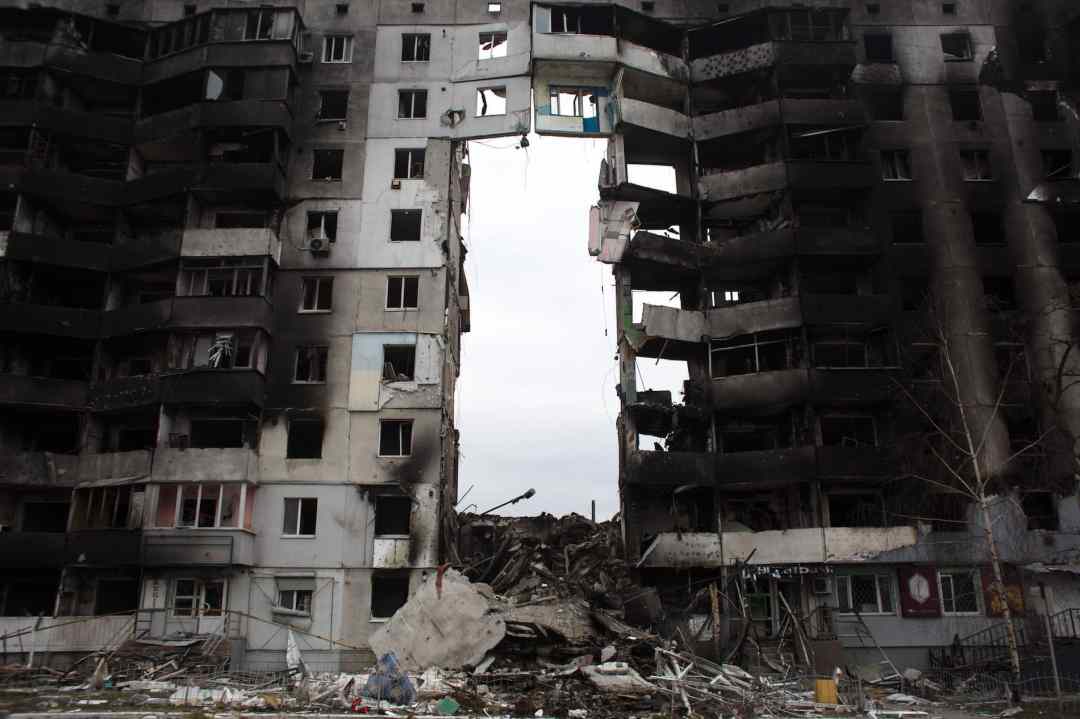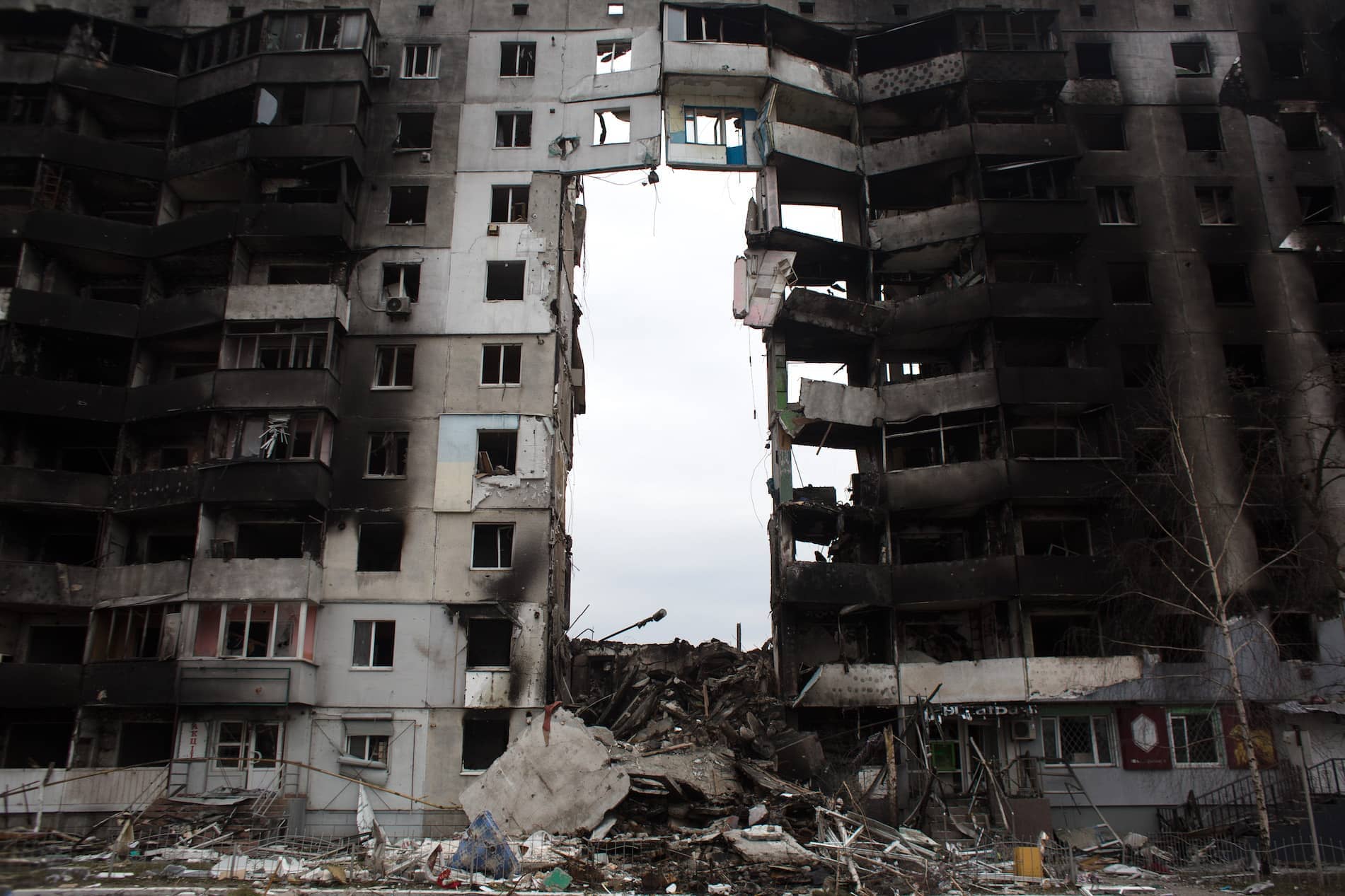The first phase of the Russian invasion of Ukraine has ended with a decisive defeat for Russian forces in the north of the country. The large scale Russian advances in the north west and north east were halted in the outskirts of Kyiv. Russian forces failed to take the encircled north eastern cities of Chernihiv, Sumy and Kharkiv and have subsequently been forced to withdraw to their starting positions in Belarus and Russia itself. The discovery of horrific Russian atrocities committed against the Ukrainian civilian population in the newly liberated towns has hardened Ukrainian determination to take back all of their lost territory rather than accept any ceasefire along current lines. In determining the outcome of this war, the next fortnight is likely to prove crucial. The long-term nature of the conflict – for both Russia and Ukraine – will be decided by the coming offensive.
In the south west, the Russian attacks failed to encircle or capture the key city of Mykolaiv on the route to Odessa and have also been halted in attempts to advance northwards along the western bank of the Dnieper river towards Kryvyi Rih. Ukrainian counteroffensives now threaten to cut off the entire Kryvyi Rih thrust, and are attempting to push towards the occupied city of Kherson, which Russia captured in the initial days of the invasion. In response to these major defeats, Russia has pulled back its mauled forces from the north and is attempting to concentrate forces for a new offensive in the east of Ukraine to achieve much more limited strategic goals. The progress of this renewed and more geographically concentrated offensive will determine the outcome of the second phase of the war for Ukraine.
The primary problem for Russia in preparing for this new offensive is that its failure to anticipate Ukrainian resistance and to concentrate forces against realistic objectives in the first phase has led to extremely high levels of attrition.
The number of Russian vehicles which have been visually confirmed as destroyed or captured since the invasion began is now well over 2,500. This includes 450 main battle tanks and 825 armoured fighting vehicles, infantry fighting vehicles and armoured personnel carriers. Estimations on the number of casualties incurred vary widely, but even simply based on the number of vehicles destroyed will be very significant. US intelligence estimates have suggested more than 10,000 Russians have been killed in action; Nato estimates suggested between 7,000-15,000 by late March.
If Ukraine can hold the line for the next two weeks, then the Russian regular army in Ukraine may be a spent force
Historical conflict data strongly suggests that the total number of casualties – which includes soldiers wounded, captured and missing – is likely to be at least three to four times the number killed in action. A senior Nato officer estimated Russian total casualties as 30,000 – 40,000 on 24 March. After two more weeks of fierce fighting and a large scale Russian withdrawal under fire on two axes of advance, this estimate is likely to be on the low end of reality. These are disastrous losses, especially considering that the casualties will be disproportionately incurred by the frontline vehicle crews and infantry elements rather than support troops.
Russia massed around 190,000 to 200,000 troops around Ukraine at the start of the invasion, which included around 40,000 second-line Rosguardia territorial defence troops. This force represented around 120 of the 168 battalion tactical groups (BTGs) which the Russian army can theoretically generate from its regular contract forces.
With such heavy casualties and huge vehicle losses – around 30-40 BTGs worth of equipment and personnel, but spread out among the combat-facing elements of most formations – many Russian units will already be combat ineffective by most normal standards. The situation is likely to be worst amongst the units which have been defeated and forced to withdraw through artillery fire and ambushes from the northern axes around Kyiv, Chernihiv and Sumy. However, these are exactly the units which are now to be rapidly redeployed to the east to generate a concentration of forces for a new Russian offensive in the Donbas. There has also been extremely fierce combat throughout the war on the Donbas front. This means that although Ukrainian JFO forces there have undoubtedly taken heavy attrition, so have the Russian and DNR/LNR separatist forces attempting to break their current defence lines along the Donets river.
Russian attempts to mobilise additional forces are hampered by the need to maintain some defensive forces in Kaliningrad and elsewhere to deter Nato, and the fact that their logistics fleets of trucks and fuel tankers have suffered appalling attrition during the first phase.
What’s more, the Russian conscription cycle has just turned over as normal. This means Russia either needs to release the current crop of 130,000 conscripts who have finished their service period and begin training the new intake from scratch or declare a state of war in order to prevent the expired conscripts from returning home. However, the Kremlin has so far sought to characterise the invasion as a ‘special military operation’ which does not allow conscripts to serve overseas or be retained passed their service period. Declaring a state of war would remove such barriers, but would be a major political risk. It would expose the Russian population to the fact that its regular military has proved unable to achieve success in Ukraine. This step would demand much greater sacrifices and active participation.
As such, the Russian attempts to recommit its badly mauled northern formations to the Donbas is a mark of desperation as these forces are likely to have very limited combat effectiveness and morale after their dismal experiences, war-crimes participation and heavy losses. They are reinforcing units in the Donbas which have been making slow and costly progress at best. To achieve the newly-reduced Russian objectives of encircling the JFO (Joint Forces Operation) force remnants in Donbas, the Russian Army will need to achieve and then exploit major breakthroughs; this will involve assaulting a well sited Ukrainian defensive line on the Donets river which is being rapidly resupplied and reinforced now that the Ukrainian Army has cleared the immediate threat to Kyiv.
At the same time, Russia must defend its supply routes and current gains from Ukrainian counteroffensives around Kharkiv and Kherson. Ukrainian forces have limited heavy mechanised forces and artillery for conventional offensive operations, but its light infantry with anti-tank weaponry can harry supply routes and threaten to cut off Russian forward positions if they find weakly defended areas to penetrate the frontlines.
If Russia can make significant breakthroughs with their newly reconcentrated forces over the next two weeks in the Donbas then they may be able to encircle or force a major retreat by the JFO forces around Severodonetsk and Sloviansk. This would allow them to establish a relatively stable new line of contact across most of Donetsk and Lugansk oblasts, down to Kherson in the south. This will be easier if, or more likely when, the beleaguered defenders of Mariupol in the south are finally overrun completely.
The fall of Mariupol would enable Russian forces in the south east to redeploy for more offensive operations against the JFO’s southern flank. However, if Russian forces fail to make significant progress in the face of Ukrainian reinforcements and flanking counterattacks, and continue to suffer similar rates of attrition, then it is unclear what additional forces Russia can realistically bring to bear for future offensive actions.
If Ukraine can hold the line for the next two weeks, then the Russian regular army in Ukraine may be a spent force. The West must ensure that the flow of weapons and financial aid to support this continues; ideally including Russian or Soviet-made heavy equipment such as tanks, artillery and air defence systems which Ukrainian forces can easily use and maintain, in addition to more anti-tank missiles and MANPADS, the portable missiles that have had much success bringing down Russian aircraft in the skies above Ukraine.







Comments